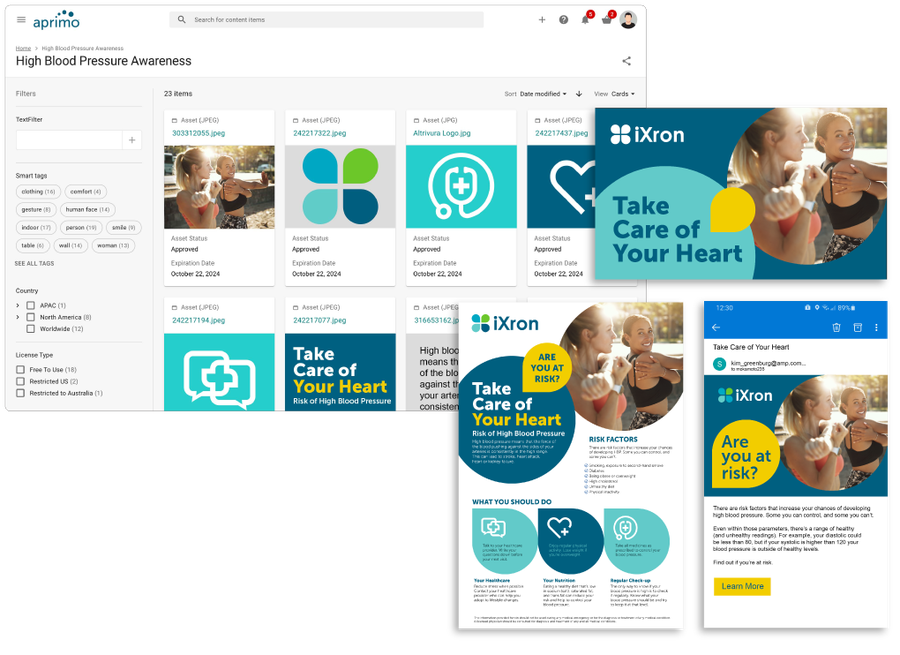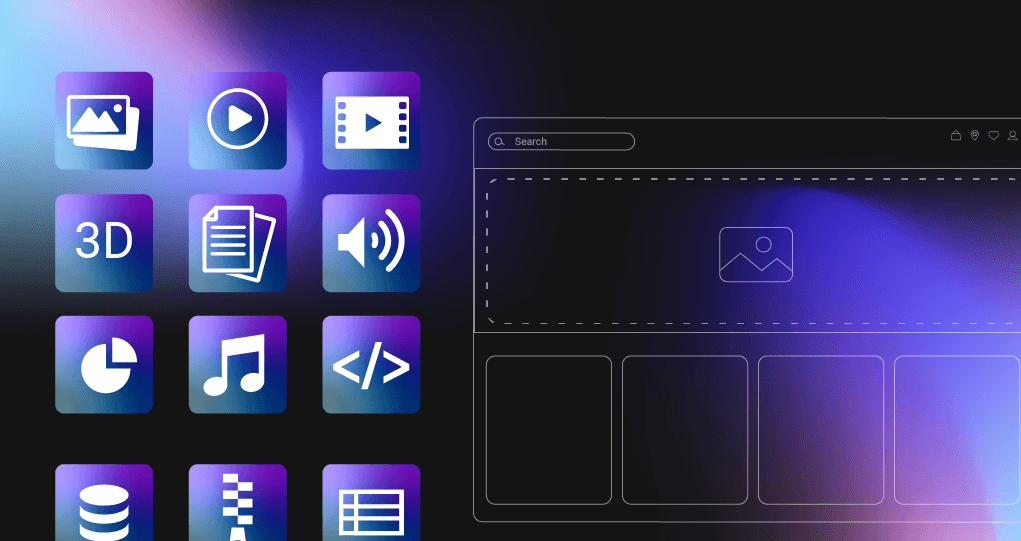Creating content from scratch every time isn’t scalable. That’s why more marketing teams are turning to modular content an approach that breaks campaigns into reusable, brand-approved components that can be mixed, matched, and personalized at speed.
A digital asset management (DAM) system is what makes that approach operationally possible.
TL;DR
A DAM system enables modular content strategies by organizing reusable content elements like headlines, images, and CTAs. With structured metadata, version control, and integration into planning and personalization tools, DAM helps scale content production across teams and channels, without sacrificing quality or consistency.
What is modular content?
Modular content is made up of small, independent components like product images, headlines, copy blocks, call-to-actions, or localization variants that can be combined to create full marketing experiences. Think of it like a content LEGO set, where the pieces can be reused across campaigns, regions, and formats.

What DAM brings to the table
To manage modular content effectively, you need more than a shared folder. Here’s how DAM supports this approach:
- Stores atomic content elements like hero images, text snippets, and CTAs
- Applies structured metadata to tag assets by persona, region, or channel
- Integrates with planning, personalization, and creative tools
- Manages version control across all content modules and variants
- Enables reuse workflows so teams can assemble campaigns faster
Why it matters for scaling content
The more teams, markets, or channels you manage, the more content you need. Without a system to govern it, things break down assets go off-brand, outdated content gets used, and work gets duplicated.
A DAM provides the control layer that makes modular content scalable. It ensures that every asset is approved, every version is traceable, and every piece is ready to be reused, without reinventing the wheel.
Built for global teams and multichannel campaigns
Modular content isn’t just efficient, it’s essential for large organizations managing multichannel campaigns across geographies. A DAM ensures that each piece of content can be localized, personalized, and distributed without creating chaos in the process.
Final Take
Modular content speeds up production, increases personalization, and cuts down on duplicate work. But it only works if you have the infrastructure to support it. That’s where DAM comes in—it’s the backbone that keeps modular content organized, on-brand, and ready to go.
FAQ
What is modular content in marketing?
Modular content refers to reusable content components—like copy blocks, images, or CTAs—that can be combined in different ways to create personalized campaigns.
How does a DAM system support modular content?
DAM systems store, organize, tag, and version modular assets so teams can find and reuse them efficiently across channels and regions.
Why is metadata important for modular content?
Metadata allows teams to tag each content block by audience, region, or format, which makes reuse and personalization faster and more precise.
Can modular content help with localization and personalization?
Yes. Modular content enables teams to adapt and assemble campaigns for specific markets or segments without starting from scratch.
Is DAM required for modular content to work?
While not strictly required, a DAM makes modular content scalable, manageable, and brand-safe—especially in enterprise environments.



